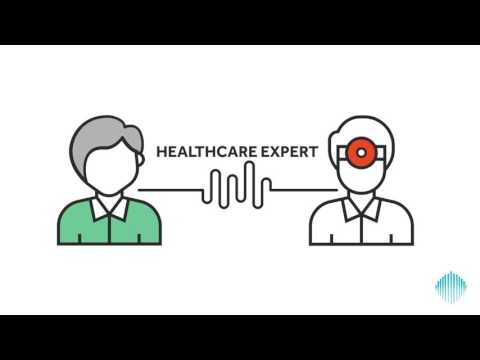Meredith O’Brien is the Communications Coordinator at CCRM. Meredith graduated with a Bachelor of Arts, Honours in Film and Media from Queen’s University. While writing her fourth-year thesis titled “iViral: The power of the individual in driving viral content,” she quickly realized her passion for marketing and communications, specifically in the areas of digital and social media. Her research analyzed how businesses can leverage the power of the individual to optimize new technologies and channels of communications. Her strength in critical thinking and her creativity motivate her to always search for new and innovative ways to engage people with impactful content.
Digital health has the ability to positively disrupt health care by putting more power in the hands of patients to manage their personal data. It includes mobile health, wearables, telehealth, telemedicine and personalized medicine. At the system level, digital health can reduce inefficiencies and costs, increase quality of care, improve access, and more. These techniques and technologies aid in tracking, recording and analyzing patients’ symptoms and reactions. By definition, “digital health provides us with a toolbox of technologies and techniques that support the development of new, innovative, patient and caregiver–centered models of care.”
The impact and opportunities for digital health have not gone unnoticed. The global industry reached a net worth of US$196.3 billion in 2017 and this is estimated to grow to around US$536.6 billion by 2025.
The ease of accessibility of digital health technologies that offer diagnostic capabilities has contributed to the volume of individuals who use them. What is the impact of this? These days, anyone who has access to a phone or computer can visit “Dr. Google” and self-diagnose before seeking professional advice. There are many hospitals, health charities, companies, etc., offering health-care support online.
23andMe participates in the digital health care space and offers personalized health information to consumers by “using qualitative genotyping to detect clinically relevant variants in the genomic DNA.” The process begins with the consumer purchasing the Saliva Collection Kit. Once received, the individual spits into a test tube and within 6-8 weeks receives an email containing a report of potential genetic health risks.
Recently, the US Food and Drug Administration approved 23andMe to start distributing tests for cancer, specifically looking for three key breast cancer mutations. The BRCA 1 and BRCA 2 genes are being tested in an individual’s DNA, and if mutations in these genes are found, the results indicate a much higher risk of developing breast cancer or ovarian cancer. Therefore, with no interaction between a doctor and patient, these diagnostic technologies can now predict/suggest the likelihood of the consumer getting cancer. (Ed: Click here and here to read how Signals has covered the topic of BRCA mutations in the past and here for a post about screening.)
Initially, this seems like a great preventative action to take. With one in eight women predicted to get breast cancer in their lifetime, genetic screening can identify the people at very high risk for breast cancer and allow them to take action early. However, this test only detects for three out of over 1,000 known mutated genes, and “the ones tracked by the test aren’t the most common BRCA mutations.”
For women who test for a “high risk” of mutated BRCA 1 and BRCA 2 genes, this information could encourage them to seek professional advice and further testing, which is a positive outcome, but the results alone should not prompt treatment decisions.
For women who do not initially receive a “high risk” warning, it means future symptoms could potentially be ignored or not taken as seriously. As well, this test should not be treated as a replacement for regular cancer screenings, a foreseeable reaction.
With the growth of digital health technologies and increasing patient engagement, the possibilities that digital health offers are becoming limitless. But, as always, do your research and remember to consult with a health-care professional.
As the fields of digital health and regenerative medicine continue to mature, we may see them converge. If you’re already aware of a digital health application in regenerative medicine, please share it in the comments below.
Guest
Latest posts by Guest (see all)
- Regenerative immunotherapy: Hope for chronic autoimmune diseases - September 16, 2025
- Canada’s regenerative revolution: Why AI is the catalyst - September 4, 2025
- Summer by Design: A launchpad for future entrepreneurs and industry scientists - August 14, 2025







Comments